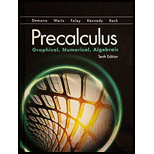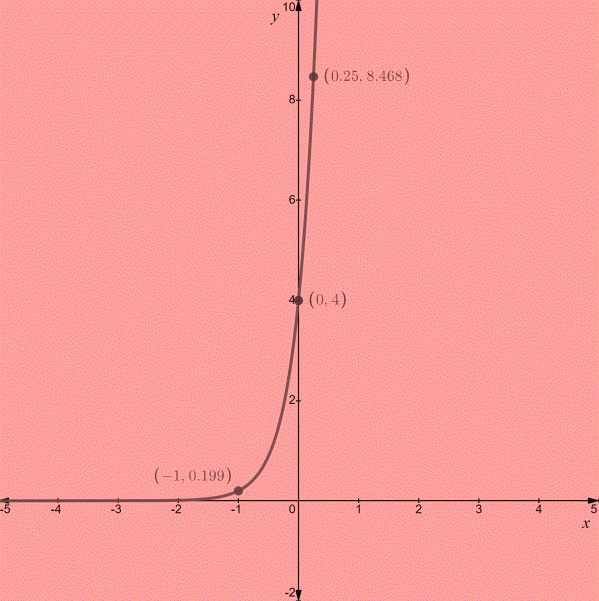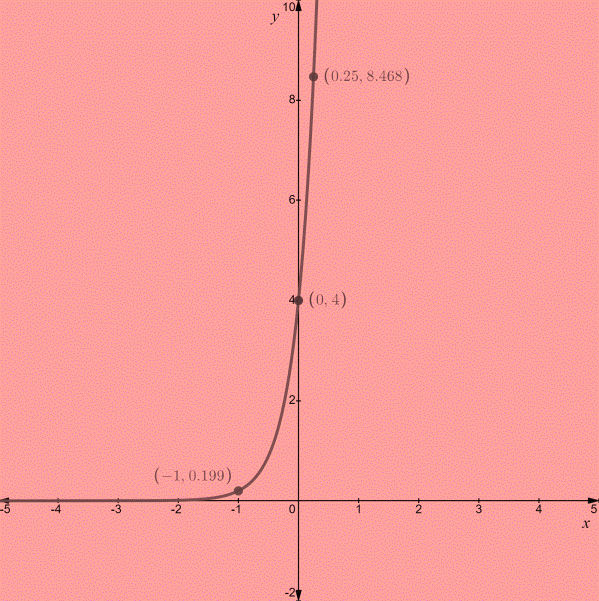
To graph: The given function and to analyze it.

The domain is
The range is
It is a continuous function for all real numbers.
The function is always increasing.
No symmetry.
Bounded below, but not above.
No local extrema.
Horizontal asymptote is
No vertical asymptote.
End behavior:
Given:
Calculation:
Comparing
Since
Now, the graph is

The given function is well defined for all real numbers, therefore the domain is
From the graph, it can be seen that the
Therefore, the range is
From the graph, it can be seen that the curve has no breaks or jumps; therefore it is a continuous function for all real numbers.
From the graph, it can be seen that the value of
So, the function is always increasing.
The curve is neither symmetric with the
So the curve has no symmetry.
Bounded below, but not above.
There are no turning points for the given curve, so there is no local extrema.
Horizontal asymptote is
No vertical asymptote.
End behavior:
From the graph, it can be seen that
Chapter 3 Solutions
EBK PRECALCULUS:GRAPHICAL,...-NASTA ED.
 Calculus: Early TranscendentalsCalculusISBN:9781285741550Author:James StewartPublisher:Cengage Learning
Calculus: Early TranscendentalsCalculusISBN:9781285741550Author:James StewartPublisher:Cengage Learning Thomas' Calculus (14th Edition)CalculusISBN:9780134438986Author:Joel R. Hass, Christopher E. Heil, Maurice D. WeirPublisher:PEARSON
Thomas' Calculus (14th Edition)CalculusISBN:9780134438986Author:Joel R. Hass, Christopher E. Heil, Maurice D. WeirPublisher:PEARSON Calculus: Early Transcendentals (3rd Edition)CalculusISBN:9780134763644Author:William L. Briggs, Lyle Cochran, Bernard Gillett, Eric SchulzPublisher:PEARSON
Calculus: Early Transcendentals (3rd Edition)CalculusISBN:9780134763644Author:William L. Briggs, Lyle Cochran, Bernard Gillett, Eric SchulzPublisher:PEARSON Calculus: Early TranscendentalsCalculusISBN:9781319050740Author:Jon Rogawski, Colin Adams, Robert FranzosaPublisher:W. H. Freeman
Calculus: Early TranscendentalsCalculusISBN:9781319050740Author:Jon Rogawski, Colin Adams, Robert FranzosaPublisher:W. H. Freeman
 Calculus: Early Transcendental FunctionsCalculusISBN:9781337552516Author:Ron Larson, Bruce H. EdwardsPublisher:Cengage Learning
Calculus: Early Transcendental FunctionsCalculusISBN:9781337552516Author:Ron Larson, Bruce H. EdwardsPublisher:Cengage Learning





